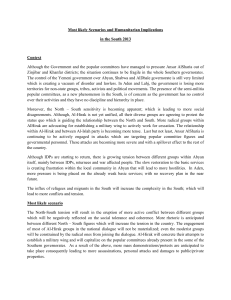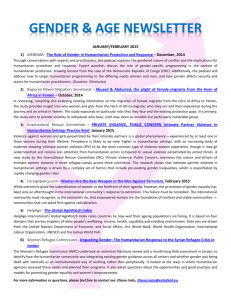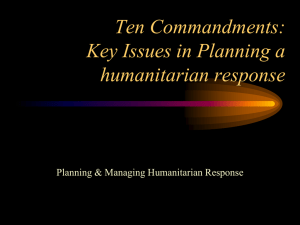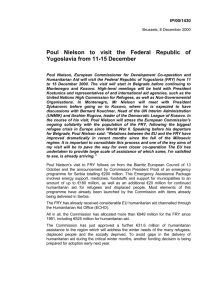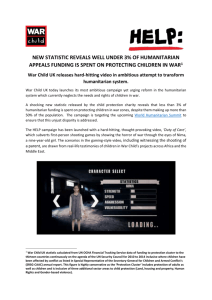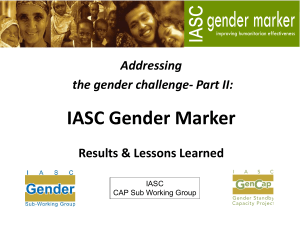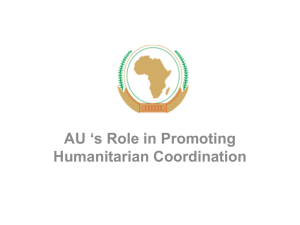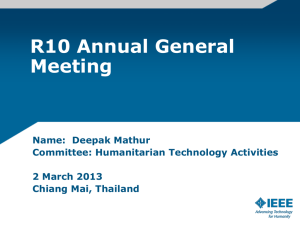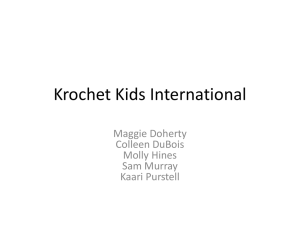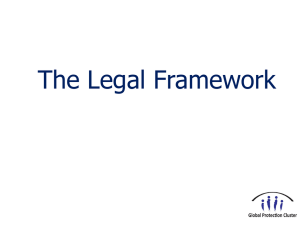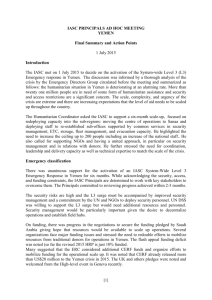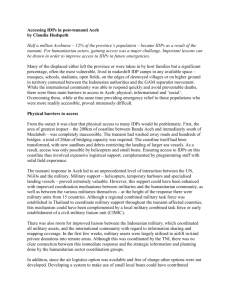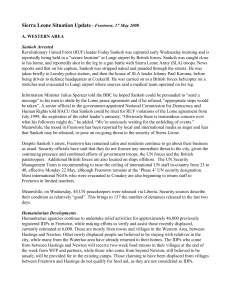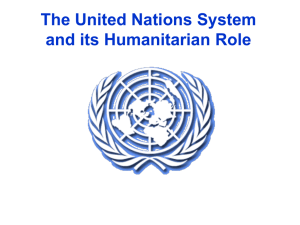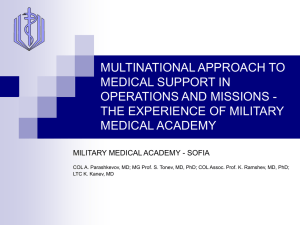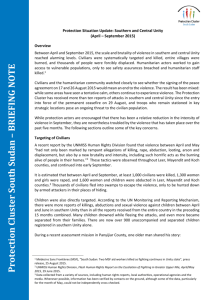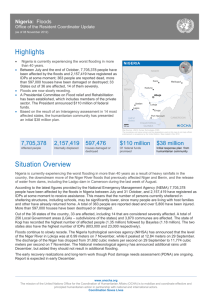Yemen - arabhum
advertisement
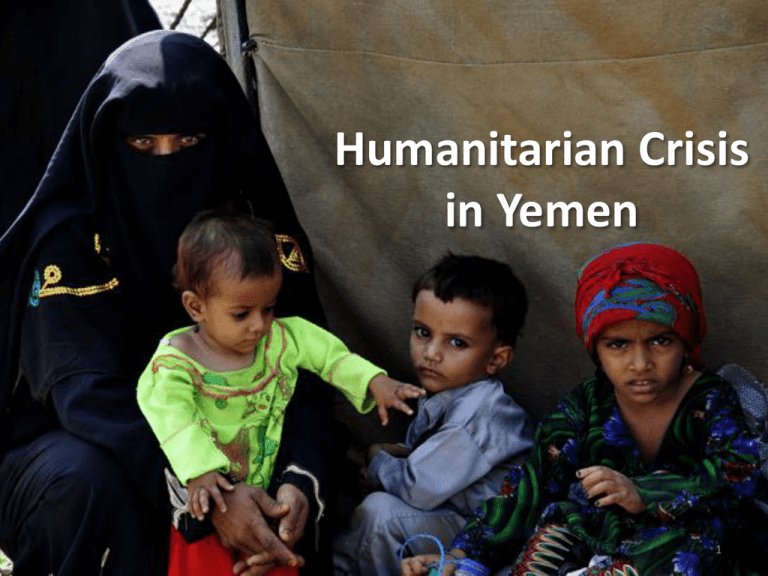
Humanitarian Crisis in Yemen 1 Humanitarian Country Team (HCT) – Yemen Outline • Scale of the Crisis • Humanitarian Risks • Challenges • Humanitarian Outreach • Response 2 Scale of the Crisis • 12 million people (half the total population) affected by humanitarian crisis • Crisis could undermine political transition and prospects for peace and long-term development • Humanitarian community working with Government to reach those affected, but could do more with additional support • Needs increasing especially in the south, but funds not yet available to meet new requirements • Humanitarian community targeting 6 million of the most vulnerable in 2012. 3 Effect on population • 10 million food insecure, nearly one million children malnourished • 550,000 people displaced from their homes by conflict • 42 percent of population living below poverty line, youth unemployment 53 percent • Health problems among children attributed to unsafe water, inadequate sanitation and poor hygiene. Source : CAP 2010, CAP 2011 and CAP 2012 Food insecurity – per Governorate No data < 20% 20.1-35% 35.1-50% > 50% 5 Humanitarian Risks • Nearly one million children under 5 malnourished. • 267,000 severely malnourished • Hodeidah alone 31.7 per cent children malnourished • Child labour, early marriage and pregnancy prevalent 6 Challenges • 12.7 million without access to safe water and adequate sanitation • Risk of diseases because of poor hygiene practices • 902 schools damaged or closed in 12 Governorates. Fewer girls than boys in schools, with high dropout rates • Children recruited to support military goals, others trafficked • Crisis has mainly affected rural children, female-headed households, IDPs, returnees and refugees • In Lahj and Aden, 13.7 percent of pregnant women risk having poor growth of unborn babies. 16 percent of pregnant or lactating women are malnourished. 7 Shelter • 90 percent of IDPs live in informal settlements that do not meet adequate living conditions, with little or no privacy • 69 out of 135 schools in Aden serving as temporary emergency shelter for 20,000 IDPs • Thousands managing with plastic sheeting and make- shift accommodation, lacking sufficient mattresses and blankets in harsh weather conditions. 8 Health • Outbreaks of cholera and diarrhea recorded and more expected in the year • Measles threat to children under 5, and the risk of reemergence of polio • Dengue, Chikungunya outbreaks, with cross-border implications • Severe disruption of basic health care services leading to inadequate 800 response capacity 600 • Violence against children, 159 killed in 2011 by landmines and UXOs 400 200 Measles cases by month - Yemen – 2012 After EPI campaigns 711 550 455 192 225 144 0 Jan Feb Mar Apr May Jun 9 Protection • Protection space more limited. The lack of necessary documentation results in limited access to basic needs and services • Women and children increasingly exposed to violence, exploitation and neglect • Lack of basic services further exposes women, children and youth to exploitation 10 Gender issues • In the coming six months, 16 percent of displaced pregnant women risk life-threatening labor due to lack of access to health care • High risk of gender based violence, including early/child marriage and sexual violence. In Haradh, 1,000 cases of GBV recorded • Some of the IDPs live outside camps due to social reasons including sensitivities related to women living outside their community 11 Mixed Migration • Continuing influx of refugees, asylum seekers and economic migrants from Horn of Africa. 103,000new arrivals during 2011. • 56,146 new arrivals as of June 2012, 80 percent of whom are Ethiopian migrants. • Over 20,000 stranded Ethiopian migrants registered to receive humanitarian assistance at the departure centre in Haradh since early 2011 12 Humanitarian Outreach • Humanitarian community is providing assistance in nearly all conflict areas (UN, INGOs and NGOs). • 60 international organizations, broad partnerships with local NGOs 13 Response • Ongoing activities across the country, requirements now up to about US$584.5 million for 11 clusters; $272.5 million received as at 27 August 2012 • Partnerships with local organizations increased two-fold since November 2011 • Abyan response plan formulated, $92 million needed. Critical components include shelter, education, and protection • Agencies closely working with Government to address the issue of landmines and UXOs • Efforts to support and protect vulnerable girls and women, persons with special needs and the war affected • Early Recovery and Rehabilitation projects started in the North; agricultural services started in Sa’ada 14 Conclusion • Broad range of support required, rapid and emergency interventions most critical • Overall cluster requirements increased by 27 percent at Mid-Year 2012 • Urgently need to assist all vulnerable populations including IDPs, women, children, refugees, and food insecure populations • Addressing humanitarian needs is a critical element towards Yemen’s stability and long term development • Humanitarian community able and ready to respond and expand operations, if more funding is made available 15 Thank You ًشكرا 16

